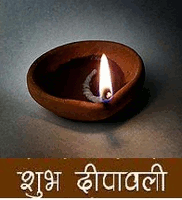 akhmali
flower and Dubo grass.
akhmali
flower and Dubo grass.
Sunday 25 November 2018
Tihar
there are various stories about the
celebration of Tihar. One of the famous stories behind the celebration
of tihar is related to Yama the god of death and his sister Yamuna. Yama
had been staying away from his sister for a long time. His sister
wanted to meet him so she asked various sources to visit him and ask him
to give her a visit. She sent crow, dog, and cow and at the end she
went herself to see her brother. She worshipped him with tika and
flowers, she put him five colored tika. Yamuna made a circle with
mustard oil, Dubo Grass (Cynodon Dactylon) and put Makhmali Mala (Globe
Amaranth) and asked Yamaraj not to go till the oil, Dubo Grass and the
flower gets dry. Therefore, every sister worships her brother keeping
him in the circle of mustard oil, putting mala (garland) of M akhmali
flower and Dubo grass.
akhmali
flower and Dubo grass.
 akhmali
flower and Dubo grass.
akhmali
flower and Dubo grass.
Dashain
Saturday 22 September 2018
Question answer
What is language translator? Write its types.
Language translator is a type of system software that converts programs written in assembly and high-level languaged into machine language.The three common types of language translators are as follow :
>Assembler
>Interpreter
>Compiler
Language translator is a type of system software that converts programs written in assembly and high-level languaged into machine language.The three common types of language translators are as follow :
>Assembler
>Interpreter
>Compiler
Monday 17 September 2018
Rakshya Bandhan
| Raksha Bandhan | |
|---|---|

A rakhi being tied during Raksha Bandhan
| |
| Official name | Raksha Bandhan. |
| Also called | Rakhi, Saluno, Silono, Rakri |
| Observed by | Hindus |
| Type | Religious, cultural, secular |
| Date | Purnima (full moon) of Shrawan |
| 2017 date | Monday, 7 August (Friday, 28 July in Nepal) |
| 2018 date | Sunday, 26 August |
| Related to | Bhai Duj, Bhai Tika, Sama Chakeva |
"Mayer's (1960: 219) observation for central India would not be inaccurate for most communities in the subcontinent:
The parental home, and after the parents' death the brother's home, often offers the only possibility of temporary or longer-term support in case of divorce, desertion, and even widowhood, especially for a woman without adult sons. Her dependence on this support is directly related to economic and social vulnerability."[1]A man's tie with his sister is accounted very close. The two have grown up together, at an age when there is no distinction made between the sexes. And later, when the sister marries, the brother is seen as her main protector, for when her father has died to whom else can she turn if there is trouble in her conjugal household.
— Bina Agarwal in A Field of One's Own: Gender and Land Rights in South Asia (1994), quoting Adrian C. Mayer, Caste and kinship in Central India (1960)
Raksha Bandhan, also Rakshabandhan,[2] or Rakhi, is a popular, traditionally Hindu, annual rite which is central to a festival of the same name, and celebrated in South Asia, or among people of South Asian origin around the world. On this day, sisters of all ages tie a talisman, or amulet, called the rakhi, around the wrists of their brothers, symbolically protecting them, receiving a gift in return, and traditionally investing the brothers with a share of the responsibility of their potential care.[1] Differing versions of the rite have been traditionally performed by Hindus in northern India,[3][4][5] western India,[6] Nepal,[7] and former colonies of the British Empire to which Hindus had emigrated from India in the 19th-century. The expression "Raksha Bandhan," Sanskrit, literally, "the bond of protection, obligation, or care," is now principally applied to this ritual. Until the mid-20th-century, the expression was more commonly applied to a similar ritual in which a domestic priest ties amulets, charms, or threads on the wrists of his patrons and receives gifts of money; in some places, this is still the case.[8][9] The sister-brother festival, on the other hand, had various names, varying with location, with some rendered as Saluno,[10][11] Silono,[12] and Rakri.[8] A ritual associated with Saluno, for example, included the sisters placing shoots of barley behind the ears of their brothers.[10] Raksha Bandhan is observed on the last day of the Hindu lunar calendar month of Shraavana, which typically falls in August.
Teej
The folk music and dances add more flavor to traditional values of Teej. It is fascinating to see women, in “Red” dancing and singing on the street, going to temple in holy and fasting mood. Teej is also called Hari Talika Teej. This festival is celebrated by Nepali Hindu women all across the world.
Teej is a small red insect that comes out of the soil during the rainy season. It is said Teej got its name from the same red insect. That is why Teej is celebrated in red.
Father Day
Subscribe to:
Posts (Atom)